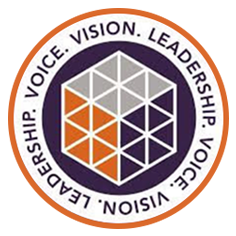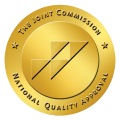 Many would consider those who have never suffered any kind of muscle pain or stiffness to be very fortunate. Muscle tightness and muscle spasms affect countless people in the US everyday, with varying degrees of severity and pain.
Many would consider those who have never suffered any kind of muscle pain or stiffness to be very fortunate. Muscle tightness and muscle spasms affect countless people in the US everyday, with varying degrees of severity and pain.
Many endure countless hours of restricted movement, painful angles, and limited motion and are only able to find some form of relief from taking muscle relaxers, which alleviate the pain enough to restore a measure of normal movement.
While they might be nothing short of a blessing for many who suffer from chronic muscle pain, they can also be a danger to some who might find them addictive. Not only that, there is also the danger of complications for people who tend to take medications with other substances, such as those who take alcohol and muscle relaxers.
What are Muscle Relaxants?
Muscle relaxants are medications prescribed by physicians to help relieve symptoms such as pain, spasms, and overactive or over-responsive bodily reflexes (hyperreflexia). These medications are subdivided into two groups: antispasmodics and antispastics.
Antispasmodics
This type of muscle relaxer targets both smooth muscles, particularly those found in the gastrointestinal tract, and skeletal muscles, effectively minimizing muscle spasms in the body. This is done by inhibiting the transmission of neurons in the brain.
Some examples of antispasmodics include:
- Diazepam (Valium, Diastat)
- Carisoprodol (Soma)
- Cyclobenzaprine (Flexeril, Amrix, Fexmid)
- Metaxalone (Skelaxin)
Antispastics
This type of prescription muscle relaxer targets the spinal cord or skeletal muscles directly so as to decrease muscle tightness and spasms. Antispastics are used to treat specific conditions that typically cause spasms, including multiple sclerosis, spinal cord injuries, and cerebral palsy.
Some examples of antispastics include:
- Baclofen (Lioresal)
- Dantrolene (Dantrium, Revonto, Ryanodex)
- Tizanidine (Zanaflex)
Do Muscle Relaxers have Side Effects?
 As both antispasmodics and antispastics both affect the central nervous system (CNS) to a certain extent, some side effects may be expected. As different people have different tolerances and thresholds, different people may experience just a few of these side effects, while others might suffer more than a few.
As both antispasmodics and antispastics both affect the central nervous system (CNS) to a certain extent, some side effects may be expected. As different people have different tolerances and thresholds, different people may experience just a few of these side effects, while others might suffer more than a few.
Side effects of using muscle relaxers include:
- Drowsiness
- Fatigue
- Muscle weakness
- Diminished or loss of muscle movement
- Headaches
- Dizziness
- Dry mouth
- Irritability
- Confusion
- Upset stomach
- Vertigo
- Nausea
- Itchiness
- Constipation
- Frequent urination
- Rhinitis
- Blurred vision
- Hallucinations
- Hypotension (low blood pressure)
- Fainting
- Agitation
- Shakes or twitches
- Disrupted sleep patterns
- Light-headedness
- Seizures
- Fever
- Chills
- Breathing difficulty
- Loss of appetite
- Rashes
- Diarrhea
- Memory issues
- Anxiety
- Heartburn
- Mouth ulcers
- Heart arrhythmia (irregular heartbeat)
Is it Possible to Get Addicted to Muscle Relaxers?
As muscle relaxers relieve pain, there are those who tend to take more than necessary, or sooner than prescribed. This behavior goes well into the area of substance abuse. Much like painkillers, it may be quite easy to develop a habit of muscle relaxers, particularly for those who suffer from chronic muscle spasms and pain.
How Long do Muscle Relaxers Stay in the Body?
Depending on some factors, such as the type of muscle relaxer used, quantity, age, health, and weight, muscle relaxers could stay in the body from four to sixteen days.
This is important to know because certain medications, such as muscle relaxers, should not be mixed with other substances, such as alcohol. Regardless if the person takes muscle relaxers with alcohol, or takes it some time after taking muscle relaxers, the probability of having complications due to the mixing of the two in the body is quite high.
What Happens if Alcohol is Mixed with Muscle Relaxers?
On its own, alcohol already has a potent central nervous system depressing effect. This is why people feel sleepy, fall over, and have diminished cognitive and physical function after taking alcohol.
Muscle relaxers also have this effect. Both types of muscle relaxers affect the central nervous system and inhibit certain neurological signals to diminish muscle spasms.
The combined central nervous system depressing effect of the two substances not only increases the expected effect when a person takes a depressant, but also serves to aggravate the side effects given by both substances.
The more common side effects of combining alcohol and muscle relaxers include:
- Increased feeling of drowsiness
- Severe feeling of fatigue
- Slowed breathing
- Severely impaired motor control
- Compromised coordination
- Impaired memory
- Heightened risk of seizure
- Greater risk of overdose
There are also more severe side effects that may be experienced by those who have been mixing alcohol and muscle relaxers for quite some time, have a greater susceptibility to the side effect of both, or a combination of both circumstances:
- Stupor
- Succumbing to shock
- Severe respiratory depression
- Seizures
- Unresponsive to reviving efforts
- Coma
- Death
Does Muscle Relaxer Addiction have Withdrawal Symptoms?
People with a habit of mixing muscle relaxers and alcohol may experience some or quite a few of these known withdrawal symptoms during detox:
- Insomnia
- Sleeping pattern disruption
- Vomiting
- Abdominal cramps
- Headaches
- Muscle twitches and tremors
- Impaired balance
- Impaired coordination
- Hallucinations
- Psychosis
- Anxiety
- Nausea
- Lethargy
- Chills
- Profuse sweating
- Irritability
- Agitation
- Muscle aches
- Tachycardia (elevated heart rate)
- Nightmares
- Seizures
- Hypertension (elevated blood pressure)
- Hyperventilation
While these symptoms appear to be rather severe, the severity tends to taper off after some time to more manageable levels.
What are the Treatments for Polysubstance Abuse?
 Polysubstance abuse poses a greater challenge during rehabilitation as there is a need to treat both substance abuse disorders simultaneously. This is because neglect or delay in the treatment of one addiction may increase the chances of a relapse for that particular substance dependency. Accepted treatments for polysubstance abuse include:
Polysubstance abuse poses a greater challenge during rehabilitation as there is a need to treat both substance abuse disorders simultaneously. This is because neglect or delay in the treatment of one addiction may increase the chances of a relapse for that particular substance dependency. Accepted treatments for polysubstance abuse include:
Cognitive Behavioral Therapy
Cognitive behavioral therapy (CBT) focuses on making the person realize that the problem stems from the person’s faulty or unhelpful way of thinking. This unhelpful way of thinking will inevitably lead to unhelpful behavior, such as substance abuse. CBT puts effort into changing these thinking patterns by addressing the distortions in the thinking process that are not just unhelpful, but also destructive.
By changing these thinking patterns, and as a consequence the behavioral patterns that arise from them, there is a greater chance to address multiple issues linked to the unhelpful way of thinking, such as addiction, depression, and a host of other psychological issues.
CBT is also largely used to treat people who developed a reaction or behavior that they have grown into, much like the destructive habits or characteristics picked up by people who had a problematic or abusive childhood. Many people who later developed a substance abuse issue often witnessed behavioral patterns that led to the addiction from their immediate environment while growing up. This kind of learned behavior tends to take root in the person and become difficult to point out as being destructive, as it may be the only thing they saw while growing up, giving them the impression that it was correct.
Individual Therapy
Unlike typical substance abuse issues where there is mostly only one preferred substance dependence, polysubstance abuse could point to a deeper issue that could require comprehensive psychotherapy. This is where a more focused approach like individual therapy could prove to be more effective.
As there could be deeper issues involved in the substance dependence, the very secure and confidential nature of individual therapy could help the person in opening up to treatment better. It is important to make the person realize that polysubstance abuse is a serious condition, and that it is crucial that they recover from it and not be tempted to go back to it. Having a more social setting, like that of group or family therapy might be as effective in this situation.
Much like the benefit of group therapy where people receive support and don’t feel isolated and alone in what they are going through, individual therapy gives the alternate benefit of confidentiality and privacy to the person who does not feel comfortable in other people knowing about specific things in their life that led to their polysubstance abuse.
Dialectical Behavior Therapy
In many cases, substance abuse was brought about by the person’s inability to cope with stress, past trauma, or anxiety. Dialectical behavior therapy (DBT) seeks to fix this by helping the person develop better coping skills and reactions to the typical triggers that cause them to resort to substance abuse.
DBT also seeks to teach people how to better regulate their emotions, as this is also held to be one of the main reasons why triggers elicit a much bigger emotional reaction from the person that it should be. It is understood that different people react differently to situations and circumstances, but no one should react in the way that would lead them to an addiction, as this only creates even more problems for the person.
DBT is actually a modified version of CBT that was initially intended to treat borderline personality disorder, as it targets the particular psychological response formulation of the person. The triggers that bring about the urge to use substance often hit the person on a subconscious level. The psychological and emotional conditioning offered by DBT has proven to be more effective in helping people process the triggers they encounter in life, allowing them a mindset stable enough to make better responses to the triggers.

















